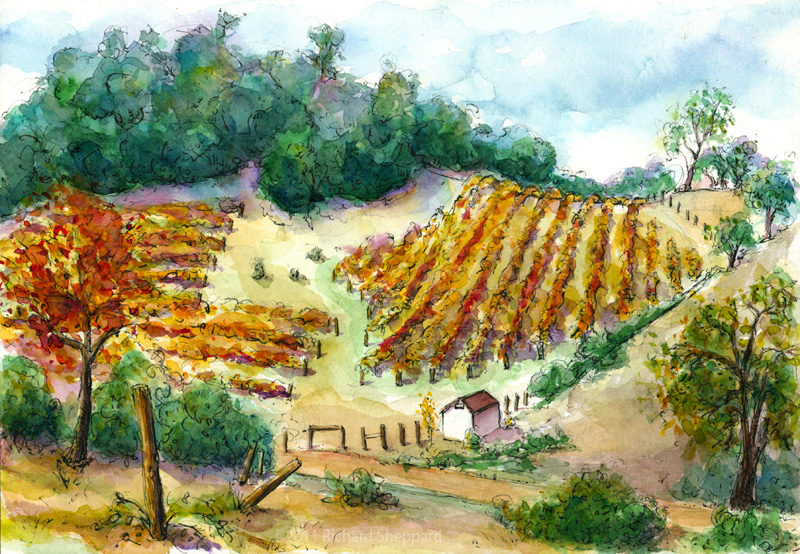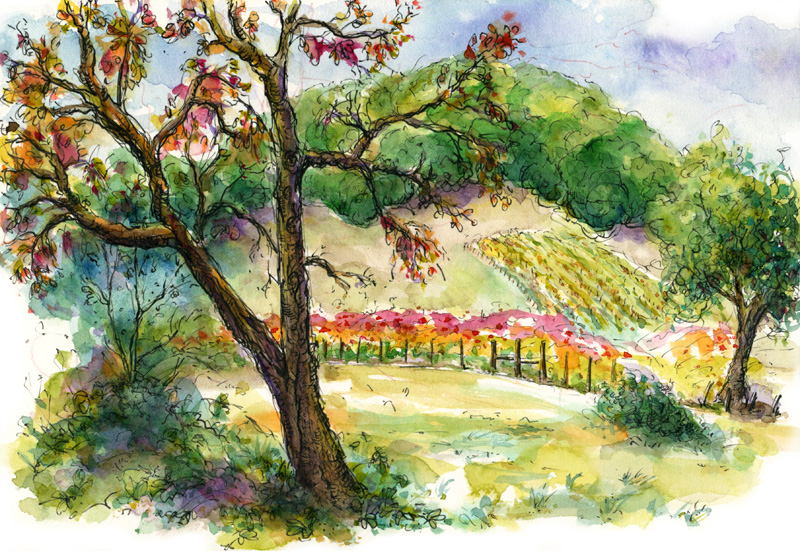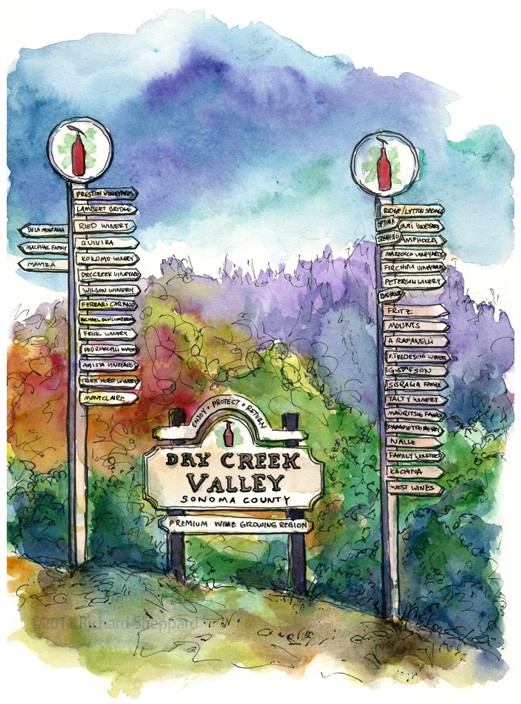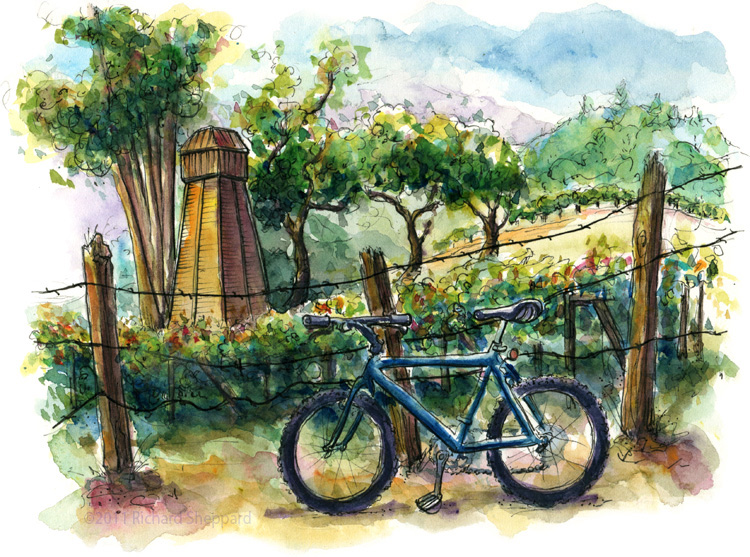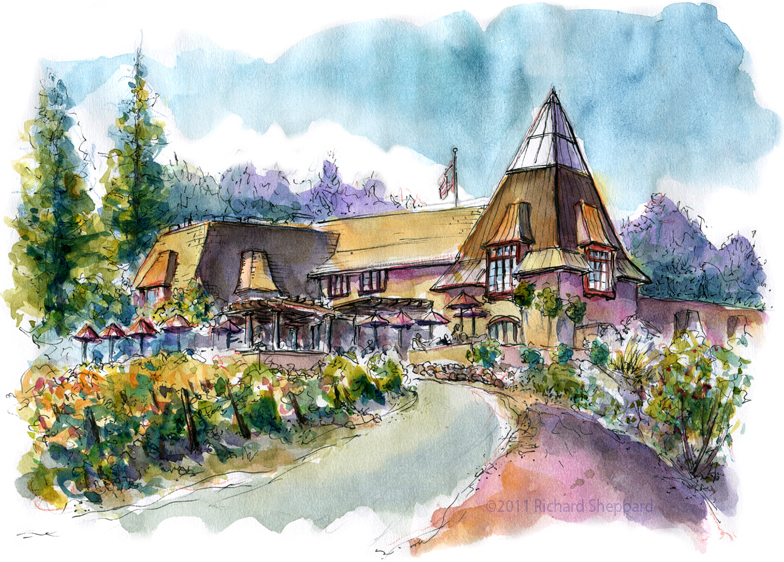 Last week I attended a Healdsburg Chamber of Commerce luncheon supporting Healdsburg’s bid to be named an official bike-friendly town. While there, several Dutcher Crossing Winery employees and I discussed the great biking in Healdsburg, and I was invited to Join Debra Mathy, Dutcher Crossing proprietor, and a few other bike enthusiasts on a tour of the scenic Dry Creek Valley the following weekend.
Last week I attended a Healdsburg Chamber of Commerce luncheon supporting Healdsburg’s bid to be named an official bike-friendly town. While there, several Dutcher Crossing Winery employees and I discussed the great biking in Healdsburg, and I was invited to Join Debra Mathy, Dutcher Crossing proprietor, and a few other bike enthusiasts on a tour of the scenic Dry Creek Valley the following weekend.
I knew this was going to be a tough biking trip since I’d start by riding ten miles just to get to the winery, not even figuring in the Dry Creek Valley tour and ride home. But I couldn’t pass up the opportunity to bike through Dry Creek with Debra, an avid cyclist.
When I left the house at 8 am, it was a chilly 36 degrees. I rode north from Healdsburg to Geyserville, and before descending into Dry Creek, passed a young vineyard dotted with white-plastic grow tubes, supporting young vines, and spaced in rows along a hill in such a way that reminded me of a graveyard. That just might be for me after todays long bike ride, I thought jokingly.
At the winery, Deb introduced herself, and the entire group of riders posed for a picture. Then we were off, heading down Dry Creek Road and crossing over to West Dry Creek Road, with its gentle rolling hills, colorful vineyards, and old oak trees canopying the narrow, winding road.
Now and then I’d catch the scent of fermenting grapes drifting from wineries along the road. It’s a sweet, effervescent aroma that reminds me of when I worked a harvest in Robert Mondavi’s cellar many years ago. That scent makes me long for a good glass of Pinot with lunch. After about a half hour ride, we looped back along Dry Creek Road and returned to the winery, where we were greeted by the tail wagging of Dutchess, the Golden Lab winery dog.
I was then escorted into the tasting room to a full reserve wine tasting led by Wine Club Manager Brittany Galvan. We started off with Sauvignon Blanc, moved onto Chardonnay, Zinfandel, and then Cabernets, many of which were vineyard designated wines. I relished in the aromas and flavors of the wines, learning of winemaker Kerry Damskey strong propensity toward blending. He blends his Cabernet Sauvignon with Syrah, a newer technique to California, but which has been used for decades in Australia. Brittany noted that the vineyard designated Cabernet Sauvignon-Syrah blend is the first of its kind in Dry Creek Valley.
After the tasting, Brittany gave me the full tour that included the picnic area with outdoor fireplace and a spectacular view of rolling hills covered in orange, red, and yellow vineyards. Most of the grapes have been harvested and now ferment in tanks. Although extreme weather conditions have made this harvest a rough one for many area vineyard owners, Dutcher Crossing did well by getting their estate grapes in on time.
After the tour, I parked myself under the shade of an olive tree to paint the winery. I would have liked to paint a wider view of the building surrounded by vineyards, trees and hills, but couldn’t resist this almost storybook view, highlighting the flowers in the garden and its winding wooden fence. Off in the distance, Poppy Hill is blanketed in colorful grapevines.
Hungry and tired from the day’s work and pleasures, I headed home in the warmth of the afternoon sun. By the time I walked in the door, I felt exhausted, but it was worth it. What a fun day of bike riding, sketching, and wine tasting. Not to mention the great time I had riding around the Dry Creek Valley with Debra and meeting her staff at the winery.


